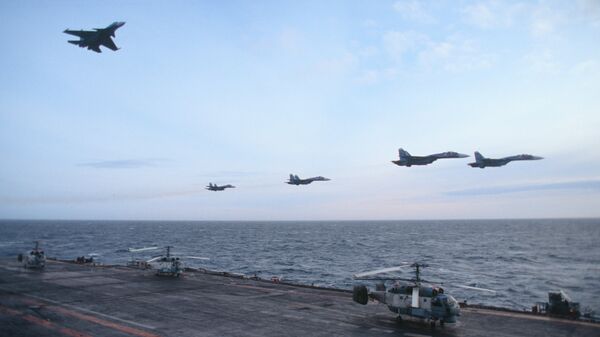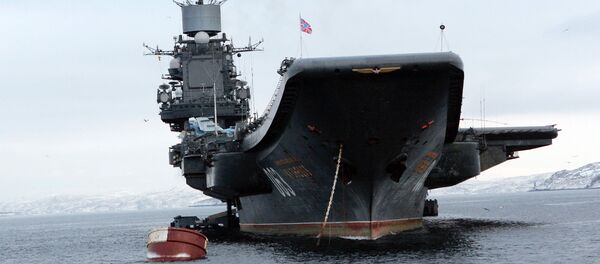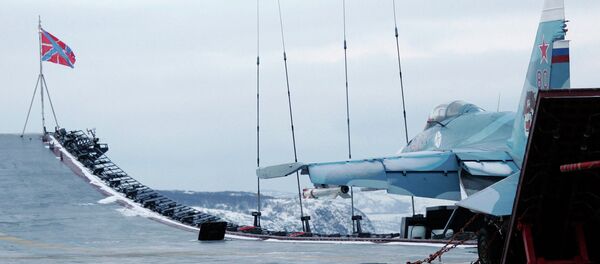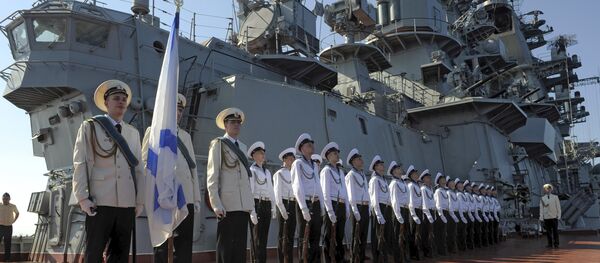The warplanes aboard the Admiral Kuznetsov include carrier-based variants of the Su-33 air superiority fighters and Ka-27/Ka-29 ASW helicopters. Last month it was reported that the Su-33s would be equipped with an ultra-precision targeting system, the SVP-24, already successfully used by other aircraft in Russia's year-long anti-terrorist operation in Syria.
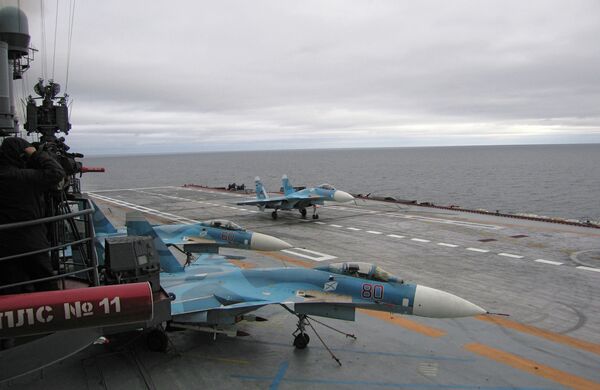
Four MiG-29K multirole fighters have also been added to the ship's roster, along with several Ka-52K reconnaissance and combat helicopters. The latter were originally designed for operations aboard French-built Mistral-class amphibious assault ships, whose delivery Paris postponed and then canceled in 2014. The choppers are equipped with precision-guided air-to-air and air-to-ground missiles, as well as unguided bombs and automatic cannon.
As for the MiGs, they are expected to use smart bombs from the KAB-500 family using the Glonass satellite navigation system, and can also be equipped with Kh-35 subsonic anti-ship missiles.
The Admiral Kuznetsov, built at the Black Sea Shipyard in Mykolaiv, Ukraine in 1985, is 306 meters long, 75 meters wide, and has a displacement of 60,000 tons. In 2012, the ship entered the Sevmash shipyard in Severodvinsk for a comprehensive refit and modernization, completed just prior to its deployment to the Mediterranean. The ship has a maximum cruising range of 8,417 nautical miles (over 15,000 km), and is crewed by 1,960 servicemen, including 518 officers and 210 warrant officers.
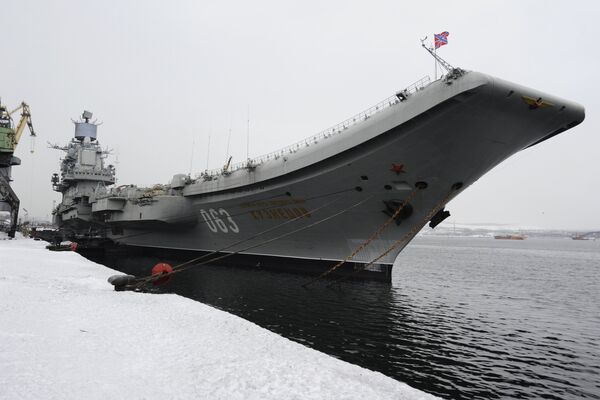
While en route to its main target – Daesh terrorists, the Admiral Kuznetsov is expected to join up with a nuclear submarine, as well as Tu-160 long-range strategic bombers, for anti-piracy and anti-terror exercises. The anti-Daesh operational deployment will be historic, in that it will be the first combat deployment of a Russian or Soviet aircraft carrier.

